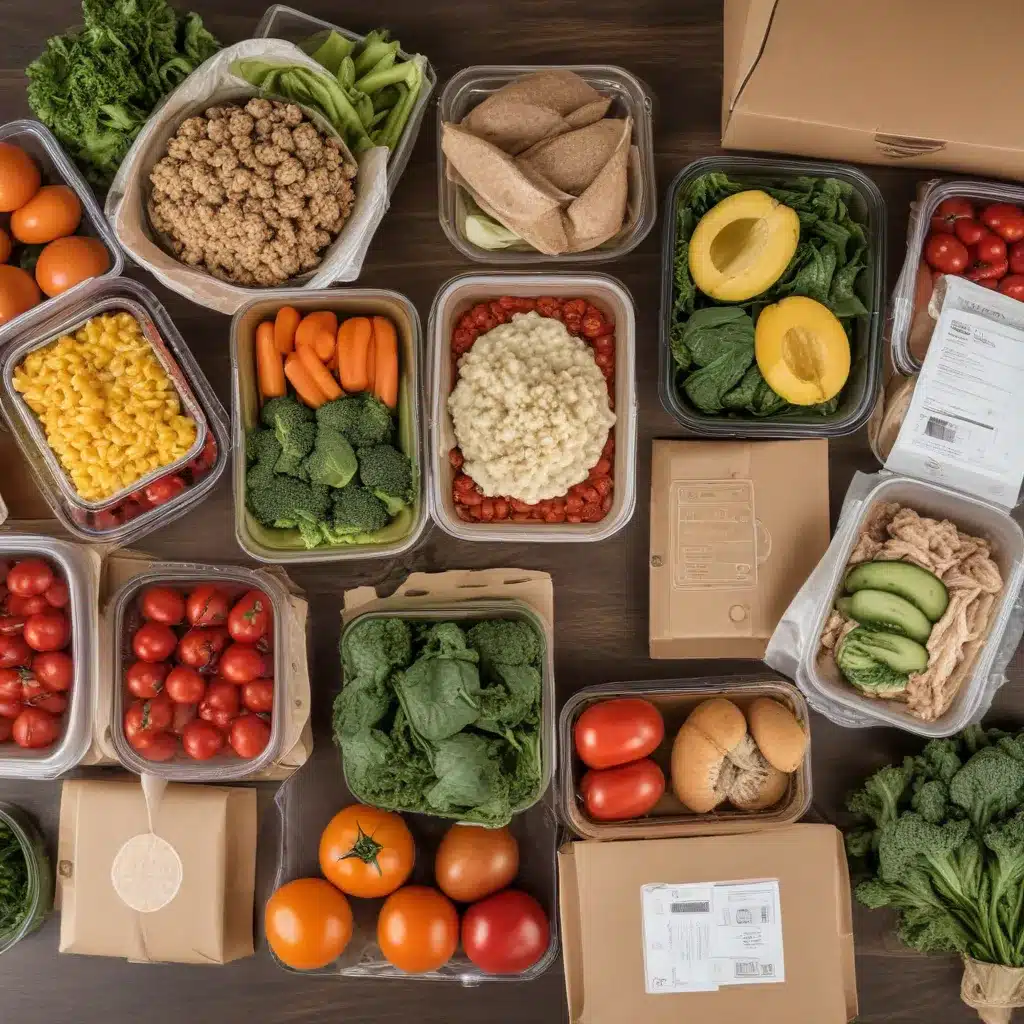
The Rise of Meal Kits and the Food Safety Implications
The modern consumer’s appetite for convenience has given rise to a booming meal kit industry. These direct-to-consumer services, which deliver pre-portioned ingredients and recipes for easy home cooking, have surged in popularity in recent years. In the United States alone, over 150 meal kit companies now compete for a share of this rapidly growing market.
Meal kits offer numerous benefits that appeal to busy consumers – from reduced food waste and portion control to the promise of more meaningful family mealtimes. However, the unique supply chain and handling requirements of meal kits also introduce distinct food safety challenges that require careful consideration.
Meal kits often contain a variety of perishable ingredients, including raw meat, seafood, eggs, and dairy products. These high-risk foods, if not properly refrigerated or stored, provide an ideal environment for the rapid growth of harmful bacteria like Salmonella, E. coli, and Clostridium perfringens. Cross-contamination is also a significant concern, as multiple food items are packaged together in the same box.
In recent years, meal kit services have been linked to several high-profile foodborne illness outbreaks. These incidents have underscored the importance of implementing robust food safety measures throughout every stage of the meal kit supply chain – from ingredient sourcing and food processing to packaging, transportation, and consumer handling.
As the meal kit industry continues to evolve, it is crucial for companies to proactively address these food safety considerations. By embracing a comprehensive, science-based approach to risk mitigation, meal kit providers can deliver on the promise of convenience while prioritizing the health and safety of their customers.
Implementing a HACCP-Based Food Safety Plan for Meal Kits
Developing a Hazard Analysis and Critical Control Points (HACCP) system is a widely recognized best practice for ensuring food safety in the meal kit industry. This systematic approach helps identify and control potential biological, chemical, and physical hazards at each stage of the production and distribution process.
Ingredient Sourcing and Food Processing
The first step in a HACCP-based food safety plan for meal kits is to carefully evaluate the sources of all ingredients. Meal kit companies should vet their suppliers to ensure they adhere to rigorous food safety standards and have robust traceability systems in place.
During food processing, special attention must be paid to preventing cross-contamination. This may involve dedicating separate prep areas, utensils, and equipment for handling high-risk foods like raw meat, poultry, and seafood. Thorough cleaning and sanitization protocols are also critical to mitigate the risk of pathogen transfer.
Packaging and Temperature Control
Proper packaging is essential for maintaining the safety and quality of meal kit ingredients during transportation and delivery. Meal kits should be packaged in sturdy, leak-proof containers that can withstand the rigors of shipping and handling. Insulated packaging and the use of ice packs or other cooling methods are necessary to keep perishable items at safe temperatures throughout the “last mile” of delivery.
Continuous temperature monitoring, both during transit and at the point of delivery, is a crucial control point. Meal kit companies should establish clear guidelines for acceptable temperature ranges and have a plan in place to address any deviations. Customers should also be provided with instructions on how to properly inspect the temperature and condition of their meal kit upon receipt.
Allergen Control and Consumer Education
Allergen management is another critical aspect of a HACCP-based food safety plan for meal kits. Meal kit companies must ensure that all ingredients are clearly labeled with allergen information, and that robust sanitation procedures are in place to prevent cross-contact between allergenic and non-allergenic foods.
Additionally, providing clear, easy-to-understand consumer education on food safety best practices is essential. Meal kit customers should receive guidance on how to safely unpack, store, and prepare their meal kit ingredients, including instructions on proper handwashing, temperature control, and avoiding cross-contamination.
Collaboration and Regulatory Oversight
As the meal kit industry continues to evolve, collaboration between companies, regulatory agencies, and other stakeholders will be crucial for driving food safety innovation and maintaining consumer trust.
In the United States, the Food and Drug Administration (FDA) has recognized the need to address food safety vulnerabilities in the e-commerce landscape, including those associated with meal kits and other direct-to-consumer food services. The FDA’s New Era of Smarter Food Safety blueprint outlines a collaborative approach to identifying and mitigating potential risks, which has included hosting a public summit on the topic.
Additionally, the Conference for Food Protection (CFP) has developed comprehensive guidance on best practices for direct-to-consumer and third-party delivery food services. This document, which covers everything from preventive controls to packaging and temperature management, can serve as a valuable resource for meal kit companies seeking to enhance their food safety protocols.
By proactively adopting HACCP-based food safety measures, embracing industry collaboration, and staying attuned to emerging regulatory developments, meal kit providers can navigate the unique challenges of this rapidly evolving landscape. In doing so, they can ensure the continued safety and trust of their customers while delivering on the promise of convenient, high-quality home-cooked meals.
Conclusion: Prioritizing Food Safety in the Meal Kit Era
As the meal kit industry continues to grow, food safety must remain a top priority. By implementing comprehensive HACCP-based systems, leveraging industry guidance and collaboration, and providing transparent consumer education, meal kit companies can mitigate the unique risks associated with their supply chains and distribution models.
Ultimately, preserving the health and safety of customers should be the guiding principle for all meal kit providers. By proactively addressing food safety challenges, the industry can continue to thrive and deliver on the convenience and culinary experiences that modern consumers demand, while prioritizing the well-being of their customers.
For more information on food safety best practices and resources for the meal kit industry, be sure to visit https://kitchenwarrior.co.uk/. Our team of culinary experts is committed to helping you navigate the complexities of the kitchen and ensure the highest standards of food safety in your home-cooked meals.


